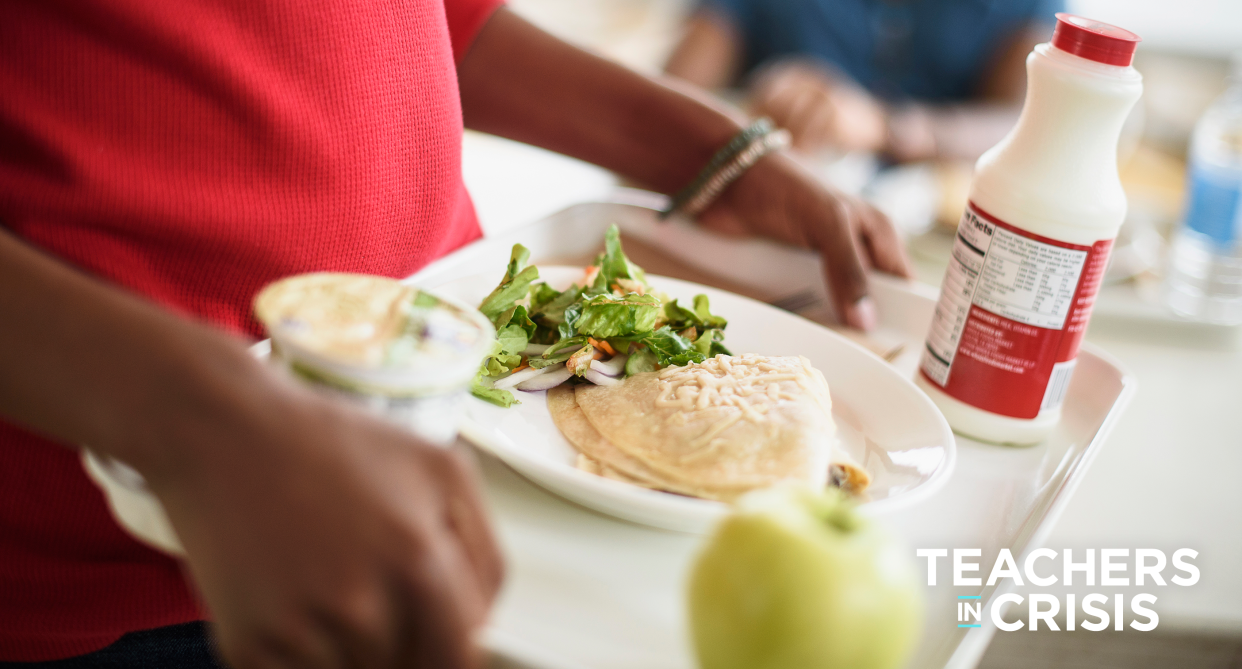500,000 children could lose free school lunches under Trump administration plan: ‘Kids who are hungry can’t learn’

A Trump administration plan to cut the number of people who qualify for food stamps could result in free school lunches being eliminated for 500,000 children in need.
The rule, announced July 23 by the U.S. Department of Agriculture, would limit the number of people who receive benefits under the Supplemental Nutritional Assistance Program (SNAP). An estimated 3.1 million Americans would be affected. But the proposal did not disclose the cuts’ ripple effect: Since food stamps are one of the ways that students become eligible for free school lunches, cutting those benefits could leave half a million children without school meals, reports The Washington Post.
Several organizations are speaking out against the proposal. “We think the administration should withdraw the rule,” Crystal FitzSimons, school and out-of-school time programs director for the Food Research and Action Center, tells Yahoo Lifestyle. “The rule, if they move forward with it, is expected to impact 500,000 kids’ automatic access to free school meals. We would expect school meals debts, which is a growing issue for a lot of schools, to get worse. We would expect kids to be hungry in the classroom.”
FitzSimons adds: “Kids who are hungry can’t learn. They have a hard time focusing, concentrating and behaving. There’s a huge body of research on the positive impact that access to a healthy diet has on learning.”
American Federation of Teachers president Randi Weingarten calls the proposal “cruel.” She tells Yahoo Lifestyle, "In the richest country in the world, no child should be denied access to lunch at school because of their parents' income level or a cruel attempt by the Trump administration to cut food benefit programs for needy kids.”
Weingarten adds: "Hungry children cannot focus on learning. Instead of shaming them, we should be investing in programs that support them and help them feel safe and welcome at school: nutrition programs that promote healthy habits and nurture families facing food scarcity, affordable breakfast and lunch for any kid who needs it, and other community and school supports that build students up, not tear them down.”
Not only would a half-million children be impacted by this plan, but teachers would be affected as well. According to a Yahoo Lifestyle survey of 50 teachers throughout the U.S., educators are already paying hundreds — and in some cases, thousands — of dollars each year out of their own pockets to provide supplies for their classrooms and students. But the money doesn’t only go to pencils and paper. Teachers also help hungry students in need by buying them food. More hungry students could mean teachers spending even more of their own money without getting reimbursed.
“The impact for teachers, who are really on the front lines — they’re going to be feeling it,” says FitzSimons. “Teachers who see hunger among their students are more likely to provide food. No teacher wants students in their classroom to be sitting there hungry, so a lot of them will step in. [The proposal] will increase hunger both at school and at home, so schools will be struggling to deal with and respond to it.”
Adds Weingarten: "Teachers already spend money out of their own pockets because they want their students to be successful. This new rule will not change that, but it is unfair and simply unnecessary."
Courtney Jones, an elementary school teacher from Tyler, Texas who founded CleartheLists to help teachers buy items on their school supplies wish lists, says that if children are hungry and the school or their parents are not able to provide for them, “teachers often feel obligated to meet the demand.”
“It’s why we spend so much out of pocket,” she says.
Jones says the proposed rule to cut benefits would negatively affect children’s ability to learn. “We’re putting that burden on them, ‘Am I going to eat or not today?’ If they’re not getting the nutrients they need, then how are they going to perform?” she says.
But Jones also knows that teachers will do whatever they can to help those students in need. “I think that’s why people are in the profession — to give — but it shouldn’t be monetary or about food,” says Jones. “It should be focusing specifically on the subject you’re teaching. Food should be an automatic. It just seems like a no-brainer.”
She adds: “Obviously, we’re going to make up the difference if we have to for the sake of the kids. It’s so sad.”
If you’re a teacher who wants to share your story, send an email to teachersincrisis@yahoo.com
Read more from Yahoo Lifestyle:
'Things have just gotten so bad': Why teachers in America are leaving the classroom for good
Florida teacher says the profession is no longer sustainable: ‘Who wants to be poor by choice?’
Follow us on Instagram, Facebook and Twitter for nonstop inspiration delivered fresh to your feed, every day.


